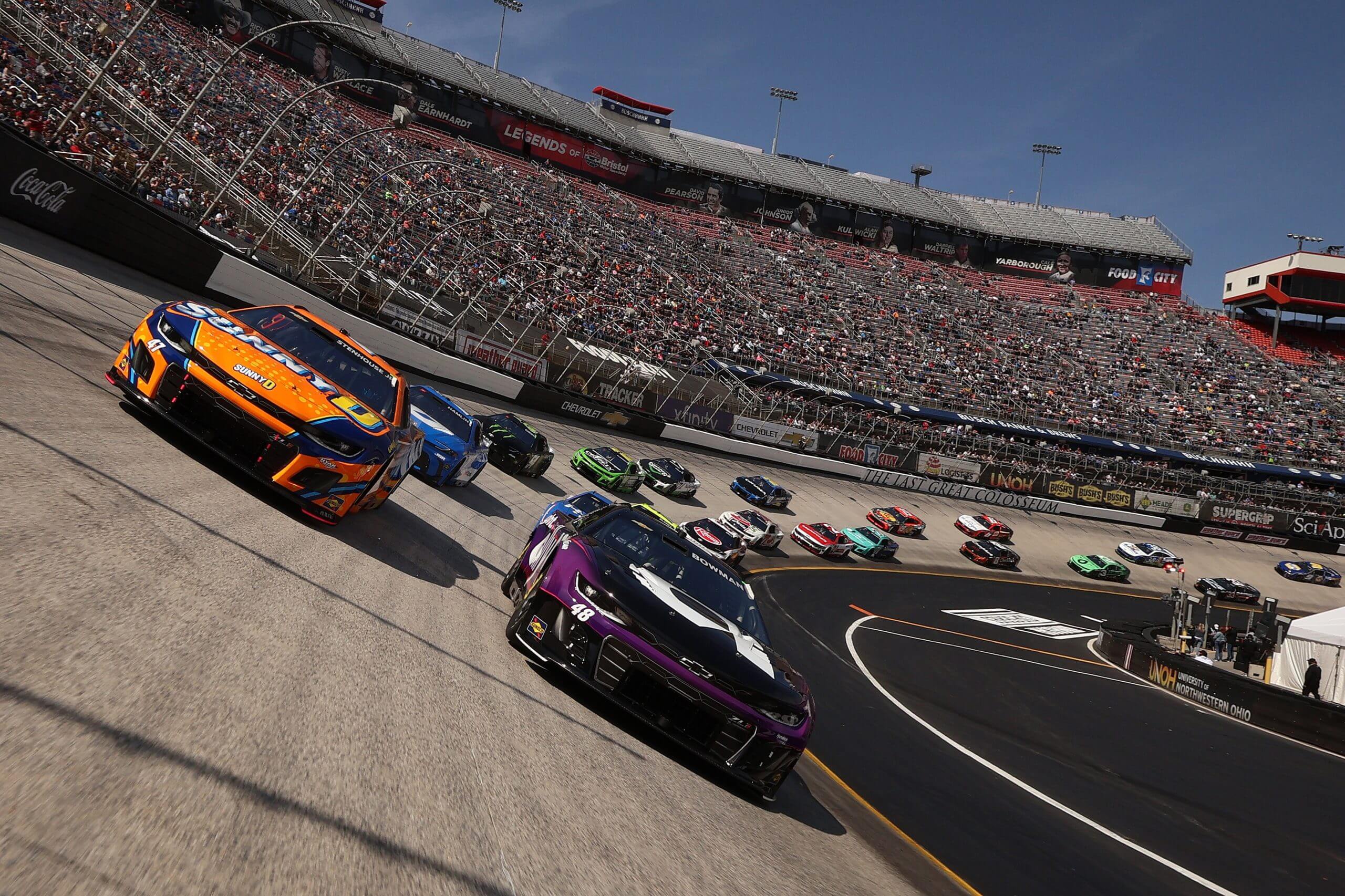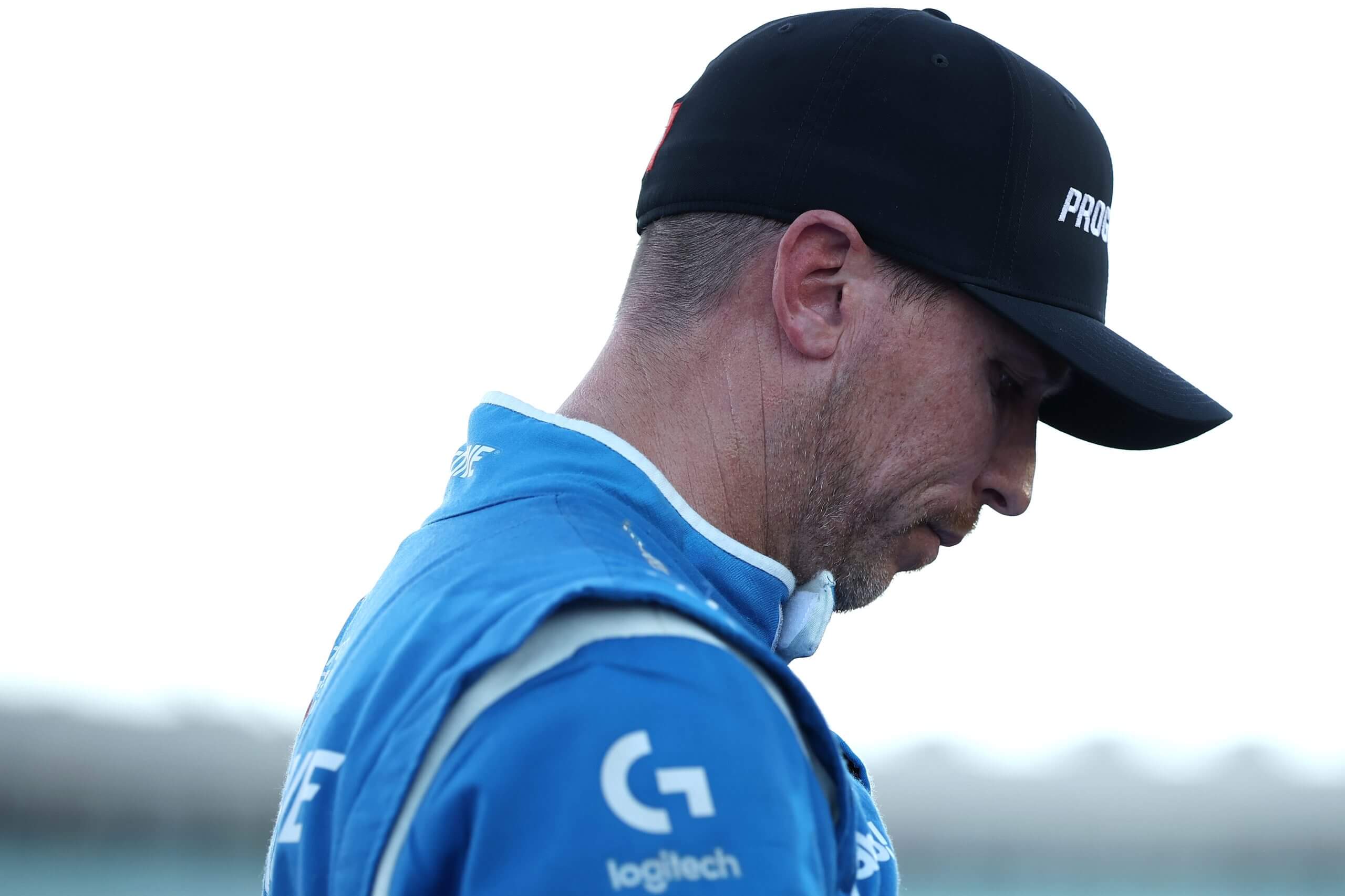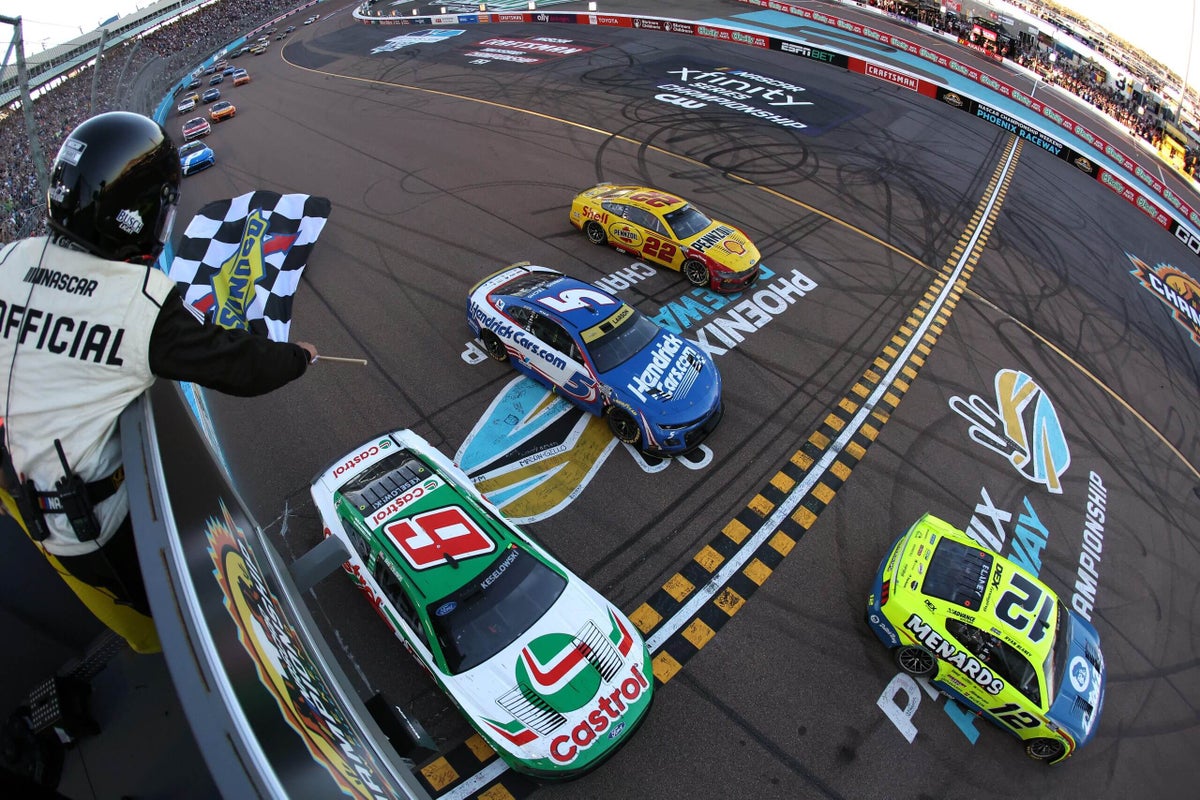There is a sense of unhappiness within NASCAR, a sentiment shared recently by many drivers and fans alike over the current state of the sport and the direction it is heading.
With this in mind, The Athletic’s Jeff Gluck and Jordan Bianchi imagined they were the boss for a day and offered their solutions on how they’d “fix NASCAR” on the most recent episode of their podcast, “The Teardown.” Gluck and Bianchi discussed in-depth what changes they’d make to the playoff format, the schedule, the on-track product, how NASCAR polices drivers fighting, limits on what teams spend, and much more.
Below are some excerpts from that conversation, stitched together within the major topics they discussed.
The schedule
The typical 38-race Cup Series schedule stretches from February to November, with all races on Sundays or Saturday nights and just a single off weekend. Most of the playoff races overlap with college football or the NFL.
Bianchi: Thirty-eight races — 36 points races, plus two exhibitions — is a lot. I am going to reduce the schedule by (removing) second dates at Las Vegas, Kansas, Phoenix, Darlington, Bristol, Atlanta and Martinsville. That puts us down to 29 races. I then would have a floating 30th date somewhere that will be something different, whether that’s Montreal or Mexico City or whatever else.
We’re also going to move the (season-opening) Clash back to Daytona (from Bowman Gray Stadium) and make that part of the mid-week build-up to the Daytona 500. We talk a lot about how we want to give races a big feel, well, having the Clash at Daytona I think will do that. The All-Star Race is going to be about going to Bowman Gray or South Boston or the Coliseum, or (tracks/venues) like that.
And then this is the last thing: Get rid of the Roval Charlotte playoff race.
Gluck: I don’t know how I feel about reducing the schedule that much. I think I would do some Wednesday night races in the summer and try to get the schedule short in that way. I just think once you go up against the NFL on these fall Sundays, it’s just tough because nobody’s beating the NFL anymore, no matter how great your sport is.
I do disagree with you on the Clash moving to Daytona. I know that’s gaining momentum, but I liked what NASCAR discovered with the L.A. Coliseum Clash, that you could really make this a marquee preseason event and really get people excited if you used it the right way.
Obviously, I do agree with your idea to get rid of the Roval. I just would also like to add that let’s get into some new markets as well — Pacific Northwest, Canada, Denver. There are actually a lot of places with a lot of race fans who are starving for things.

Bristol Motor Speedway in Tennessee is one of several NASCAR tracks that typically get two race dates a year. (Jared C. Tilton / Getty Images)
Teams and spending
Teams currently operate with no limits on spending. NASCAR’s charter system is akin to major sports league franchises, guaranteeing entry into, and money from, all 38 Cup Series events. Some smaller organizations have technical alliances with larger ones to gain access to more resources.
Bianchi: I want to limit teams to three cars, no four-car teams. I also want to limit technical alliances. I want to create parity in this sport. I want to create excitement.
The other thing I’m going to do: Let’s sit down and figure out a team spending cap. There is a huge disparity between the big teams and small teams in terms of personnel and money and resources. Let’s try to narrow that down a little bit.
The charter system remains intact. I would (also) give more money to the teams. That the charter system remains the guaranteed entry into every race is important. They need the financial assurances along with that.
Gluck: The no four-car teams is interesting. I don’t know how you do it.
The limiting of the technical alliances, I will disagree with; I don’t see how that’s really benefiting the bigger teams. I think that’s actually propping up some of the teams like Spire (Motorsports). Because you’re saying, “Here Spire, here’s some information, and we’re getting you more competitive than you would be if you were on your own.”
The spending cap is a great suggestion. As we’ve seen in F1, you get the financial accountants and the auditors in there, and they know how to find what teams might be hiding, and have big penalties if you go around that in any way.
I think the charter system has actually been a good thing. I understand people going, “Oh, I missed the days where you just have to race your way in.” There’s not enough cars showing up anyway anymore. And the charter system is clearly adding tremendous value in terms of outside investors coming in and making this a big-time sport.
The playoffs
The much-criticized current playoff format — set to be changed next year — involves 16 drivers who can qualify either by winning a race during the regular season or finishing high enough in the points standings. Those 16 then proceed through three, three-race elimination rounds, with the bottom four drivers being dropped after each round. The final four drivers then race in a single, winner-take-all championship race.
Bianchi: I got it down to two formats. It’s either the 10-race “Chase” (a single playoff round, 10 races long) or it’s (two rounds of five races each). I do want to see a championship decided by a longer runway than just a race. I think four races is good, five is great, but if you want to go back to the old 10, I’m OK with that.
I like that winning a regular-season race carries the added bonus of getting in the playoffs. I am going to go with the top 10 in points automatically gets you in, whether you win a race or not. Then you get two wild cards (for) the (two other race winners highest in points).
Gluck: I understand what you’re saying for the “win and you’re in,” but I don’t think that would work (for the Chase format). So I agree with your top 10 points (are in). Because if you were going to do a Chase, you can’t have your 30th-place guy that won a Daytona race, because you know he’s just going to finish last (in the Chase). It’s just going to take up a spot, and it’s going to be a totally irrelevant storyline.
Bianchi: If the idea is to simplify the playoffs and make it easy for a non-fan to come in, I think the 10-race Chase is probably the most straightforward way to do that.
Gluck: I’m not quite there, but I like that.
I’m going to stump here for (a full-season points race to determine the champion). I do have some hesitation in that I don’t know how it would turn out. And, man, you talk to a ton of people within the industry who really, at their core, believe there’s got to be some kind of playoff. And so that gives me pause, and I tend to go, well, maybe I should pursue a compromise of the 10-race Chase and all that. But I was around for the entire 10-race Chase (era, from 2004-16) and it’s not like things were going so great there either.
I think that if you could market 36 (races) the right way, and everybody could give it a couple seasons to breathe and see how it turned out, you could have a truly organic championship battle.
Bianchi: The (season-long format) more often than not is going to come down to a championship between two or three organizations. I want to have more teams in the mix. And I think having a playoff format allows you to do that to some degree.
Under the previous (season-long format), there were a lot of runaways. And there is more competition (for attention in the sports world) now than ever before.
Gluck: I just don’t think the 10-race Chase goes far enough. You’ve lost the thread of being able to go week-to-week. Imagine if, instead of knowing Kyle Larson and Denny Hamlin by the first month of the season were both in the playoffs, those guys (were) racing against each other for the championship all year long. And then having another driver or two in the mix, where those rivalries are really being formed. We have no consistent thread that winds between the season and holds it all together.
Horsepower
Bianchi: NASCAR is adding horsepower next year on the short tracks and road courses, and a lot of people are like, “Give me more.” I don’t know what that number is, but all the smart people at NASCAR, all the smart people on the team side and manufacturers, we’re gonna sit down and figure out what that (amount of horsepower) is.
The only concern I had with the horsepower thing is that intermediate-track racing has never been better. It is fantastic, and I don’t want to lose that.
Gluck: I do want to investigate even higher horsepower, but what I’d like to do is have maybe a full year of extensive testing to understand how it wears out the tires on different tracks, to understand what the implications would be. So much of the sport is the unforeseen consequences of decisions that might even seem correct at the time, and so that does worry me.
Stages
NASCAR races are broken into stages that award points to the top 10 finishers in each. The end of each stage also triggers a caution flag that can disrupt the race’s rhythm.
Bianchi: Keep (awarding) stage points. Eliminate stage breaks. It’s unnecessary, they screw up strategy.
Gluck: You took my thunder on eliminating the stage breaks, but keeping stage points. I am in favor of stage points. I agree with you that there’s so many times where you lose fuel strategy, you lose tire strategy, you lose some element of strategy because you know when the caution is going to come out. These crew chiefs are brilliant in the war rooms and everybody’s game-planned all this stuff.
Fighting
Bianchi: We’re not going to issue fines for fighting anymore. If Ricky Stenhouse Jr. is going to pop Kyle Busch, I’m not fining him $75,000. It’s so hypocritical to sit there and fine these guys, then at the same time you turn around and use it for commercials. You can’t have it both ways.
Gluck: The Stenhouse fine was very jarring and got everybody’s attention in the garage. If that had even been $5,000 or $10,000, I think it’s a different story. But these guys are like, “I’m not paying $75,000 for that. Yeah, absolutely not. It’s not worth it.”
That was a big overstep. I think that was too far. I want no fines for drivers fighting, and I do think that you heavily penalize or suspend anybody else that jumps in, whether it’s a family member or a crew member or whatever. Let NASCAR security break it up.
Driver personalities
Bianchi: I want to encourage identity. There are drivers out there who are stifled because of different sponsor things or team things. I don’t want to see that. If we’re trying to create stars and create massive personalities to push the sport forward, then we need to make them personalities, and we need to allow them to be themselves.
Gluck: I think what has been a huge detriment for NASCAR has been drivers feeling beaten down, like the Ross Chastains of the world, when they step out of line and everybody piles on and suddenly their personality is muted. Everybody says they want personalities, and then you get personalities, and people say, “Well, not like that,” and they pile on.
We’ve lost a lot of personality because people are just like, “All right, you know what? It’s not worth it. It’s just not worth it to be on social media, to be outspoken in interviews, to show my true self.”
Media rights
NASCAR’s latest media deal spreads Cup Series races across four different broadcasters, including a streaming-only segment with Amazon Prime and cable-only TNT. Most of Fox and NBC’s races air on their cable networks.
Bianchi: I’m OK with streaming and cable. NASCAR’s deal with Amazon was great, and there’s a lot of growth potential there. But you also need to figure out a way to get most of your races on network TV. In a sponsor-driven sport where it is imperative that (companies) get attention, you have to be on network TV. The difference in the TV ratings for network races versus cable races is jarring.
Gluck: It’s a tough calculus because the whole reason NASCAR is still in such financially good shape — and the teams are as well, for the most part, despite the downturn — is because they’ve been able to sell these TV packages to the highest bidder. And that’s propped up the sport.
But look at how well the CW did (televising Xfinity Series races) because it’s on network TV and people could find it. This is a fan base that is not as tech-savvy as other fan bases, and so it probably would help to be on network more. But it’s such a tough balance.

A late caution wiped out Denny Hamlin’s lead in the championship race earlier this month. He ultimately lost out to Kyle Larson. (James Gilbert / Getty Images)
Overtime
When a late caution flag comes out, NASCAR races can go to “overtime” beyond the scheduled distance to ensure a green-flag finish, turning the race’s end into a two-lap dash to the end after the restart.
Gluck: A conversation that has come out since (the championship race) is overtime. I don’t think that most fans want to see races end under caution. I think that fans do want green-flag finishes if possible, but the way that overtime currently is structured and also mixes up the field is essentially a microcosm of the championship conversation — you end up with (some drivers being viewed) as undeserving or out-of-nowhere winners.
Let’s say you’re about to finish the race, any race, somebody’s been dominating, they have a three-second lead, and Cody Ware spins, caution, three laps to go. Now you have to decide, OK, are you coming for tires? Everybody does the opposite of the leader. The field gets mixed up, there’s a restart, there’s a crash, another restart, the whole day is flipped on its head, and you get somebody who was out of nowhere who) wins the race. And while that is quote, “exciting,” I don’t think that is what’s best for NASCAR.
Bianchi: I do not have a serious issue with overtime and how it’s done. And yes, the leader can be put at a disadvantage. But it’s part of the sport. There are so many other pressing issues that I’m going to focus on.
Gluck: I’m trying to make my existing fan base happy, and I think there’s a traditionalist core that wants to …
Bianchi: I get that, and that’s a great pie-in-the-sky, sunshine-and-rainbows outlook, and I want the fan base to be happy and excited. But do you truly believe that you’re going to be able to make your fan base happy by changing overtime?
Gluck: I think that the fan base can be happy again. And I’m not saying everybody will be happy. No, you’ll never make everybody happy. But the majority of fans could be energized again, because my evidence is they’re still here and, yes, they’re negative, but they are negative because they want to like this again. And again, maybe that’s naive, maybe that’s a lot of nostalgia, but I think there’s a way to try to go down that road.

